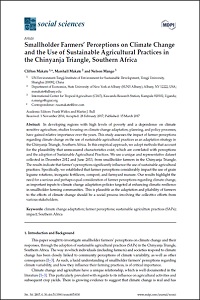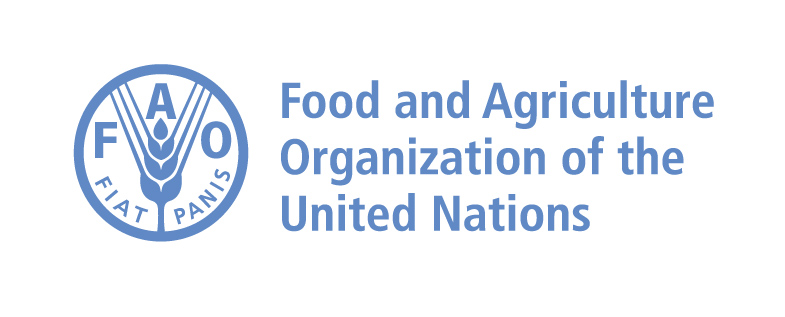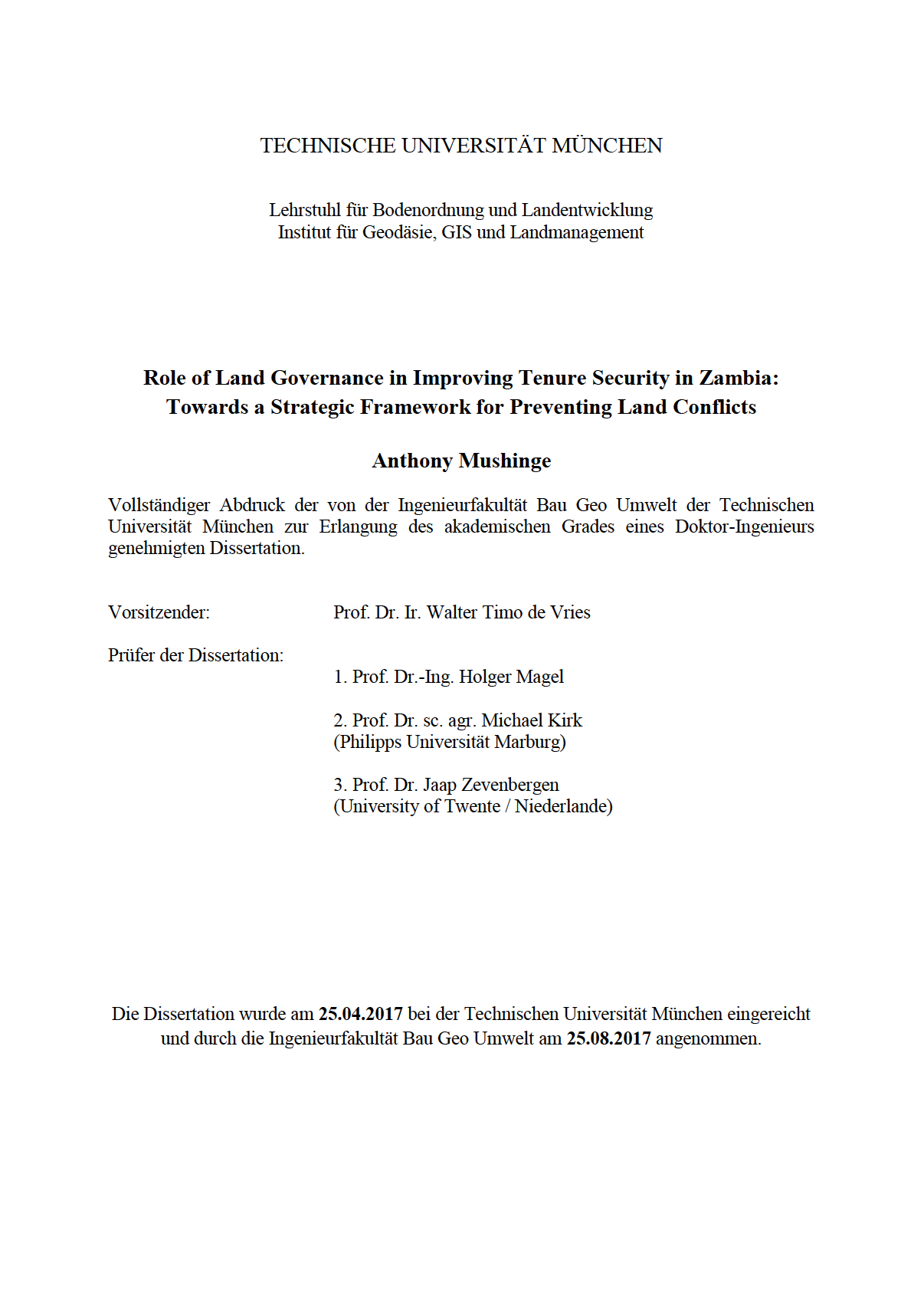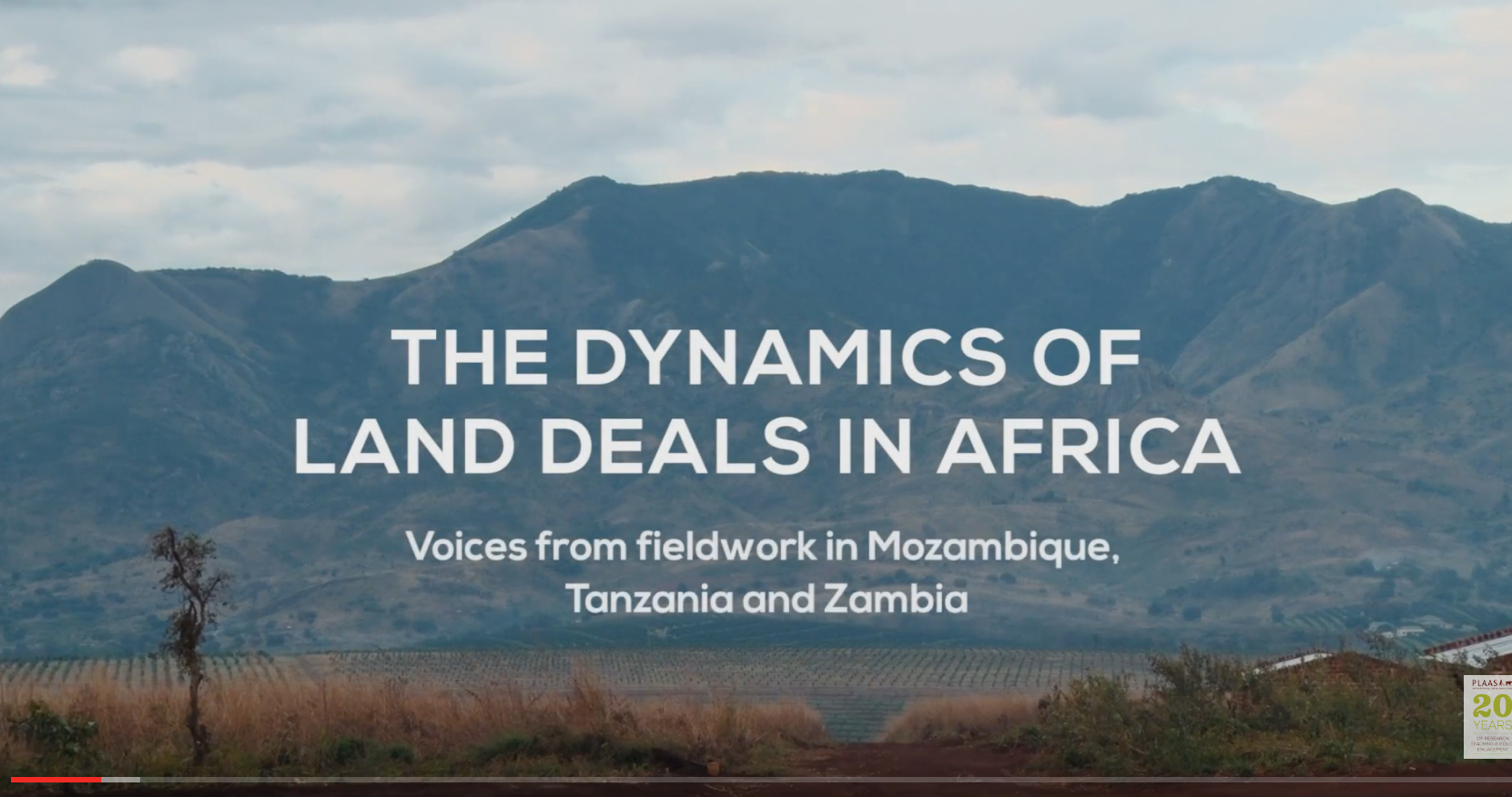In developing regions with high levels of poverty and a dependence on climate sensitive agriculture, studies focusing on climate change adaptation, planning, and policy processes, have gained relative importance over the years. This study assesses the impact of farmer perceptions regarding…
This Act amends the Property Transfer Tax Act in section 2, 4, 5 and 11. In section a definition of "intellectual property is inserted. Other amendments concern valuation of property, also of mining rights. A new section (12B) concerning disclosure of information on relationship between…
The purpose of the research is to assess the land governance system in preventing state land conflicts in Zambia. In order to obtain insights about the actual realities on the ground, based on a case study strategy (i.e. Lusaka District has a study area), the research examined the present status…
Zambia is one of the countries in Africa with a high frequency of land conflicts. The conflicts over land lead to tenure insecurity. In response to the increasing number of land conflicts, the Zambian Government has undertaken measures to address land conflicts, but the measures are mainly…
Zambia remains committed to the socio-economic development planning of the country as reflected by the return to development planning in 2005. The Seventh National Development Plan (7NDP) for the period 2017- 2021 is the successor to the Revised Sixth National Development Plan, 2013-2016 (R-SNDP…
The debate on "property" as opposed to "possession" has grown in institutional economics literature. In the real estate development context this can be extended to examining the question on what the major determinant of commencement of physical development (or '…
Media reports over the years have increasingly used the term “land grabbing:”
- Post Newspaper, 29th August 2000 - MMD cadres grabbing land in Kabangwe and Chazanga area of Chieftainess Mungule.
-Post Newspaper, April 15, 2010 - MMD cadres led by the Lusaka Provincial Chairman…
The promotion of land, soil and water conservation measures has been a widespread development in sub-Saharan Africa in a bid to tackle degradation and improve productivity. As a result, several governments have launched various campaigns on soil, land and water conservation measures. The aim of…
The need for energy security and climate change mitigation have increased blending mandates worldwide; in Southern Africa, demand for biofuels could increase following South Africa’s planned blending mandates. However, land constraints limit local industry expansion, with demand likely to be met…
Despite extensive research into rural development in sub-Saharan Africa, little is known about structural transformation1 in rural areas on the continent. Zambia was chosen as one of three case study countries2 in order to identify and to analyse rural transformation processes and their main…
Looking at several large-scale land deals in Mozambique, Tanzania and Zambia, this extraordinary documentary highlights the nuanced impacts of these investments. Small-scale farmers and producers, national government officials, and African policy-makers unpack the deals, showing that there are…





